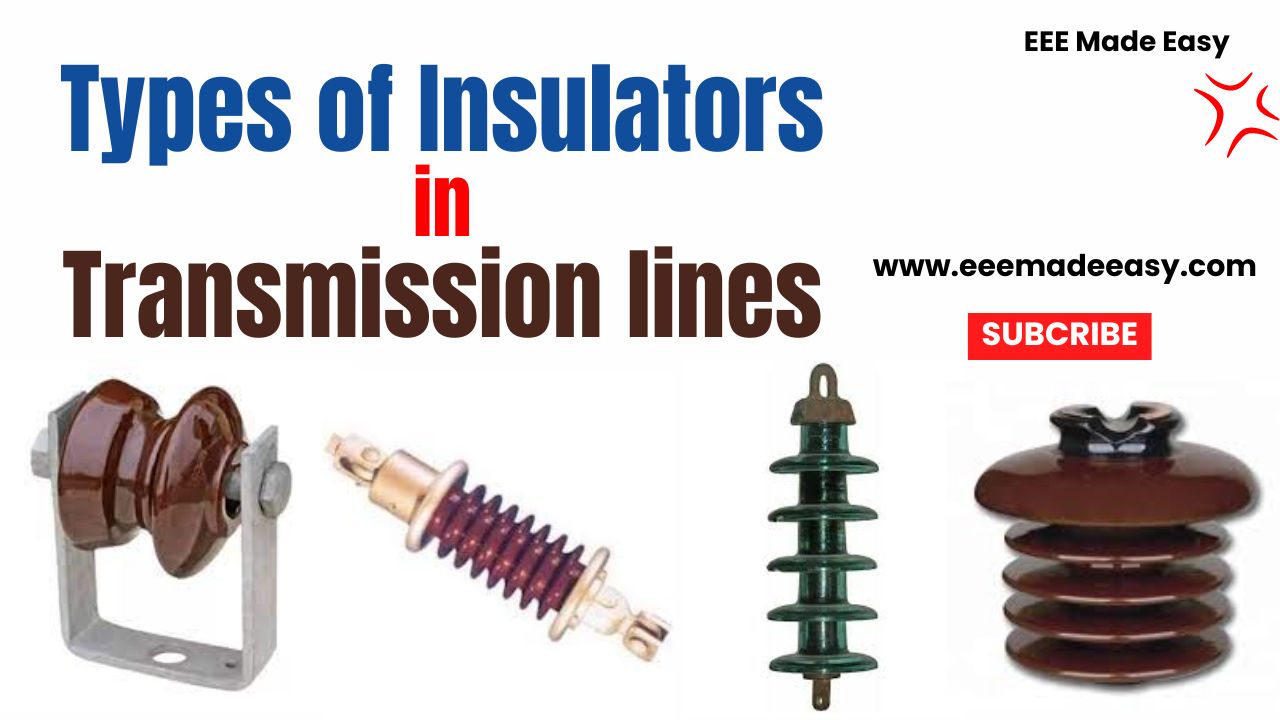The main types of insulators in transmission lines are Pin type,Suspension type, Strain type and Shackle insulator. These are the types of insulator used in overhead lines.
Types of Insulators used in Transmission lines
There common types of overhead line insulators used are;
- Pin type Insulator
- Suspension type Insulator
- Strain type Insulator
- Shackle insulator
Read Also: Overhead and Underground Electrical Distribution System|Overhead Lines Vs Underground Cables
Pin type Insulator
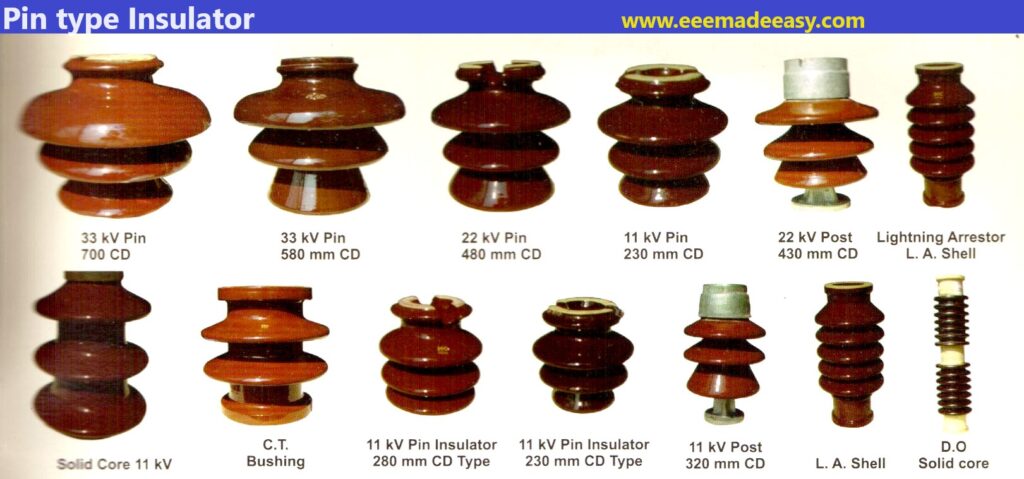
Pin type insulators are used for transmission and distribution of electric power at voltages
up to 33 kV.
Pin type insulator is fixed to the cross-arm on the pole and the conductor is housed
in a groove at the upper end of the insulator.
The conductor sits in the groove of this insulator and it is clamped with the assistance of an annealed wire of the same material as the conductor.
Suspension type Insulator
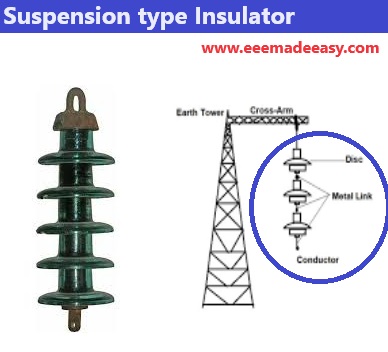
Suspension type insulators are used for voltages higher than > 33 kV.
A suspension type insulator consists of a number of porcelain discs connected in series by metal links in the form of a string.
The conductor is suspended at the bottom end of this string and the other end of the string is
fixed to the cross-arm of the tower.
Strain type Insulator
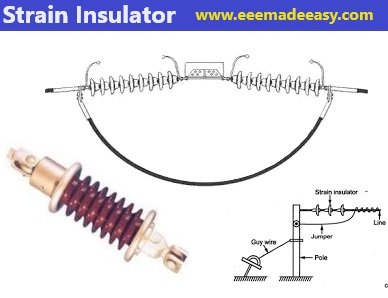
Strain type insulators are used when there is a dead end of the line or there is corner or sharp curve, under the influence of which the line is subjected to excessive tension.
Strain insulators help relieve this tension in high voltage transmission lines.
It consists of an assembly of suspension insulators in which the discs are used in the vertical
plane.
In case of long transmission lines, such as those over the width of the river, two or more insulators can be used in parallel.
For low voltage lines (< 11 kV), shackle insulators are used as strain insulators.
Shackle insulator
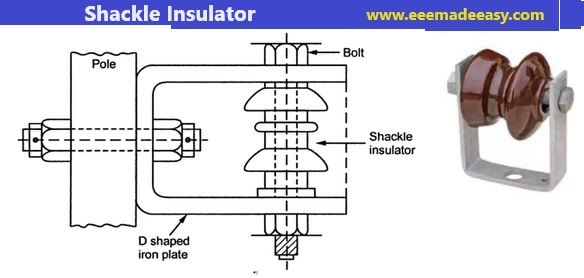
Shackle insulator is typically employed in low voltage distribution systems.
It can be installed both in horizontal and vertical positions.
The tapered hole of the shackle insulator distributes load more consistently and minimises the option of breakage when it is heavily loaded.
The conductor sits in the groove of this insulator and it is clamped with the assistance of a soft binding wire.
Read more on Power System
- Electrical Power System Problems and Solutions
- Three Phase System|Advantages of Three Phase System
- [MCQ Set 3]Electrical Power Generation, Transmission and Distribution MCQ Questions
- Electrical power Generation
- Wind Energy Power Plants|Wind Power Generation|Wind Mill Working
- Transmission tower design|Electrical tower design
- Types of Transmission Towers|Electrical Tower Types
- Transmission structures|Transmission towers and Transmission Poles|Electric Tower
- Parts of a Power transmission line and Transmission tower|Transmission tower parts
- Steam power plant Layout|General layout of Steam Power Station
- Lightning Arrester|ESE Lightning Arrester & Conventional Iightning Arrester
- [MCQ Set 2]Electrical Power Generation, Transmission and Distribution MCQ Questions
- [MCQ Set 1]Electrical Power Generation, Transmission and Distribution MCQ Questions
- Electrical power Generation
- Steam power plants|Steam power generator Plant|Thermal Power Plants
- Comparison of ac and dc transmission
- Types of Insulators in Transmission lines
- Skin Effect and Proximity Effect
- Electrical Distribution System
Latest Posts in EEE Made Easy
- Environment MCQ for RRB JE CBT 2|Objective Questions Environment for Competitive Exams
- RRB JE CBT 2 Computer Awareness Book Arihant|Objective Computer Awareness Book 2025
- RRB JE CBT 2 Exam Date 2025 Postponed|RRB JE CBT 2 Exam Date
- [PDF]RRB JE Result 03/2024 Cut off, Selected no of candidates for all regions
- [PDF]Final Answer Key Junior Instructor Mechanic Agricultural Machinery|643/2023 Solved Question paper
- Acoustics MCQs|Industries Extension officer|IEO 2025
- LASER MCQs| Industries Extension officer|IEO 2025
